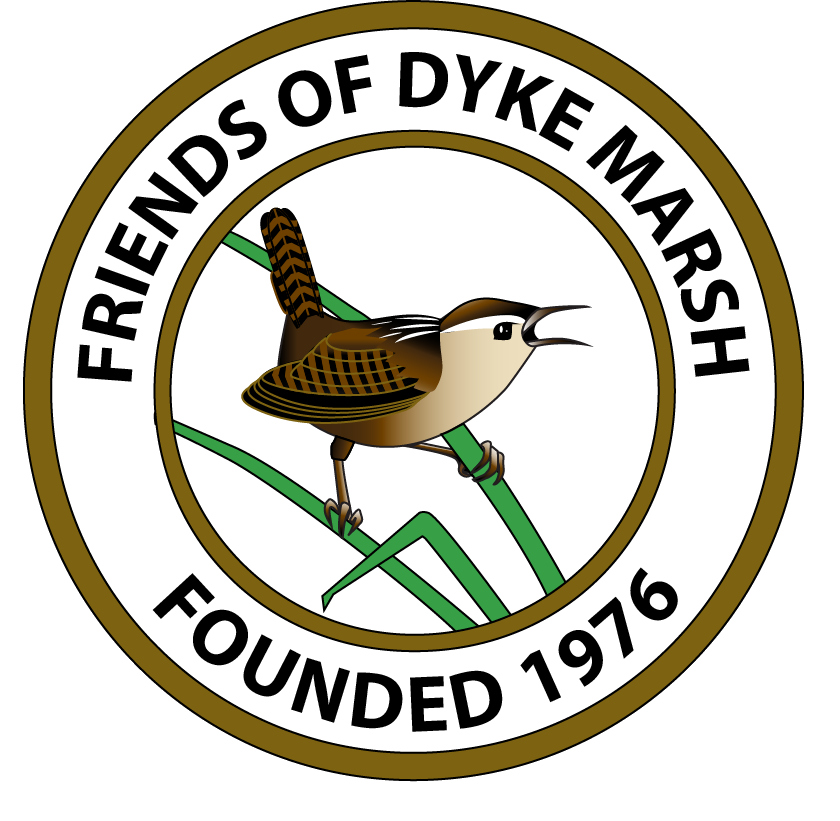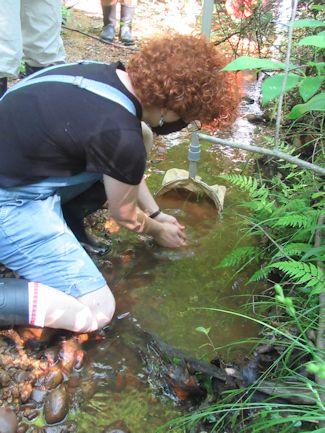On April 9 and May 27, 2021, FODM volunteers conducted habitat quality monitoring in an unnamed, intermittent stream that flows through Mount Vernon Park into west Dyke Marsh. FODM started this project in 2016.
On May 27, the stream had the highest number of macroinvertebrates that FODM volunteers have ever seen there – 206. “Although most were midges, it was still very, very exciting,” observed Ashley Palmer, Northern Virginia Soil and Water Conservation District (NVSWCD), who led the group. Palmer explains, “Midges are small macroinvertebrates considered to be tolerant of pollution. Finding many midges in a stream usually indicates poor water quality, but at this site we likely find more midges due to the intermittent stream flow which can make it more difficult for more sensitive species to be present. A healthy stream has a large number and wide variety of macroinvertebrates.”
Biological data, like macroinvertebrate sampling, can indicate long-term health trends, depending on the number and diversity of organisms found. Some species are tolerant of degraded environments and others are very sensitive. Over 80 percent of Fairfax County’s streams are impaired.
| DATE | SCORE |
| 2021 April 9 | 15 |
| 2021 May 27 | 9 |
| 2020 June 26 | 3 |
| 2019 April 16 | 6 |
| 2018 May 5 | 9 |
| 2017 | Too Dry |
| 2016 May 11 | 6 |
Process and Scores, 2016 to 2021
The group typically takes 20 samples from the stream within a 100-meter span, with the goal of identifying 100 living benthic macroinvertebrates.
The scoring system that rates ecological condition is as follows: >14, acceptable; 8 to 14, partially acceptable; <8, unacceptable.
Dates of sampling and scores are shown in the table at right.
Why Monitor?
This stream only has flowing water for part of the year and is fed by springs and a high seasonal groundwater table. The stream brings water from the streets and other impervious surfaces surrounding Mount Vernon District Park into Dyke Marsh, along with anything it picks up along the way like roadside debris or other pollution.
Because the stream dries up yearly, the organisms that can live there are limited. Palmer explains, “At this site, we instead look at seasonal trends and confirm the continued presence of macroinvertebrates. Each year we ask, ‘Are we finding macroinvertebrates? Are they the same ones as last year?’ And when we collect data each year to confirm, we find that the answer is yes.”
To learn about water quality in Virginia and the value of stream monitoring, visit Virginia Save Our Streams at the Izaak Walton League of America site and at NVSWCD.
Photos by Glenda Booth
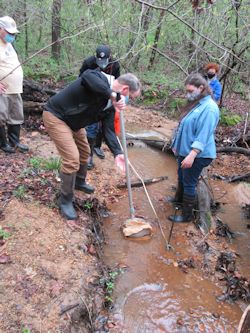 John Fagan scooped up sediments with guidance from Ashley Palmer. John Fagan scooped up sediments with guidance from Ashley Palmer. |
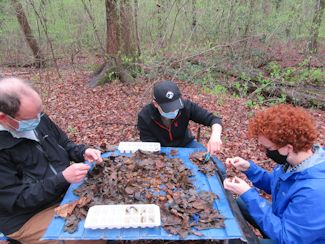 The group searched through the sediments for macroinvertebrates. The group searched through the sediments for macroinvertebrates. |
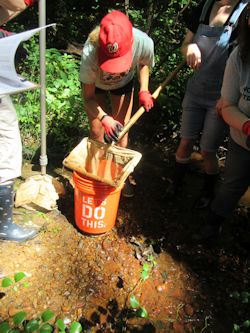 Anna Soltys dumped the sediments in a bucket. Anna Soltys dumped the sediments in a bucket. |
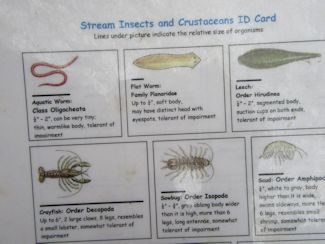 This guide shows some of the macroinvertebrates likely to be in the stream. This guide shows some of the macroinvertebrates likely to be in the stream. |
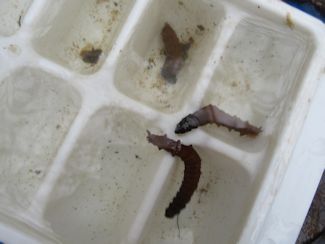 The volunteers put the macroinvertebrates found in ice trays, before returning them to the stream. The volunteers put the macroinvertebrates found in ice trays, before returning them to the stream. |
